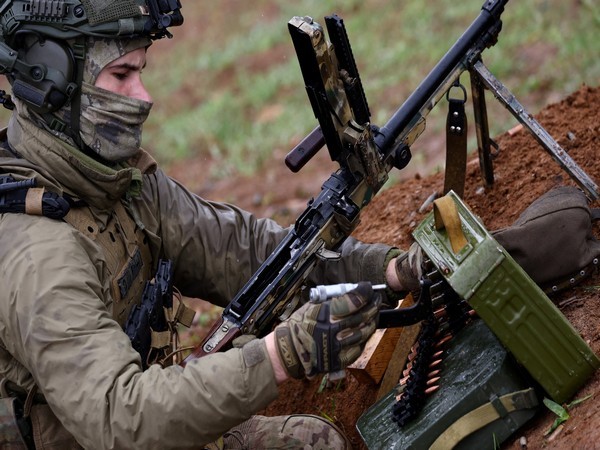The Chimera Of Chinese Arms Exports

The economic conditions of Pakistan have been under stress for a prolonged period. Even though the Pakistan military corners the largest aggregate of these resources, it is still having a challenging time to pay various defence products purchased from Chinese defence contractors such as China Electronics Technology Group Corporation (CETC) and North Industries Corporation (NORINCO). It is a chicken and egg story in the Pakistan and China’s defence procurement relationship. At one hand Pakistan faces difficulty in payments for the defence items purchased and on the other it faces a Chinese military contractors unprofessional approach in providing complete equipment, repair as well as servicing of these.
China’s arms sales operate through state-run export organizations such as Aviation Industry Corporation of China (AVIC) and (NORINCO) that primarily seek to generate profits. Arms transfers also are a component of China’s foreign policy, used in conjunction with other types of military, economic aid and development assistance to support foreign policy goals. These include securing access to natural resources and export markets, promoting political influence among host country elites and building support in international forums. In the years 2014-18, China delivered major arms to 53 countries.
Many of China’s arms customers are developing countries that tend to buy Chinese arms because they are less expensive than comparable systems sold by other arms manufacturers. Its largest customers are in South Asia and Africa, though it has also made a push into South America. China has also benefitted as countries in the Middle East and North Africa have sought to reduce their dependency on Western military suppliers. Soft power and image-building are China’s major motivators in these regions, setting the foundation for ties in the same way that its Belt and Road infrastructure projects do. Although Chinese arms are considered by some potential customers to be of lower quality and reliability, many Chinese systems are offered with enticements such as gifts, donations and flexible payment options. Chinese arms also tend to carry fewer end-use restrictions and are monitored less rigorously than competitors’ arms exports.
As per The Rand Blog by Cindy Zeng, China’s defence industry has exported malfunctioning and defective military equipment in recent years. This leads to shortfall in security needs of recipient countries as well as draining of their military budgets. Nigeria’s military reported several technical problems with the Chinese-made F-7 aircraft delivered starting in 2009. Quite a few were lost in crashes or accidents. By 2020, seven of the nine remaining had to be sent back to China for deep maintenance and repair. The military junta ruling Myanmar found that the Chinese-made radar on its JF-17 aircraft has poor accuracy and the aircraft itself lacks beyond-visual-range missile and airborne interception radar. Bangladesh reported problems with firing the ammunition loaded into its Chinese-built K-8W aircraft just shortly after their delivery. Pakistan, the largest importer of Chinese military equipment, expressed dissatisfaction with Chinese-produced F-22P frigates, including technical issues, engine degradation and overall poor performance. Pakistan also found that the onboard imaging device of the FM90 (N) missile system had a defective infrared sensor (IR17) system and SR-60 radars. As a result, the missile system was unable to lock onto targets. The IR17 sensors had to be discarded completely.
According to the Stockholm International Peace Research Institute (SIPRI), China’s arms shipments fell 7.8 percent between 2016 and 2020 when compared to the preceding five-year period. Its global market share has shrunk from 5.6 percent to 5.2 percent. China’s arms exports have declined due to poor quality and weak and inconsistent performance. As per Cindy Zheng, “China attracts customers for its military equipment with cut-rate pricing and financing, but there are hidden costs – especially when gear malfunctions.” “A lack of technological compatibility with the Chinese military equipment can prove particularly expensive. Countries often do not have the personnel with the expertise and training to resolve issues. They also can have difficulty acquiring replacement parts. Chinese suppliers have demonstrated little accountability for maintenance or repair,” the researcher added. According to Alexander Vuving, professor at the Daniel K Inouye Asia-Pacific Centre for Security Studies, “China-made weapons are not just technologically inferior; they also remain untested on the battlefield.” There is yet another set of problems related to the certifications as far as Chinese equipment is concerned. “Many countries acquiring Chinese military equipment for the first time are finding that certification standards are lower than in the West, where there are standards of excellence shared by NATO countries, which endorse the certification of technologies,” said Andrei Serbin, a geopolitical intelligence expert and director of the Argentine think-tank CRIES.
China is treating its closest strategic partner Pakistan by supplying it with defective, incomplete systems and poor repair and overhauling military services. This level of unprofessionalism is highly undesirable even if Pakistan delays payments or asks for waiver of these as a trusted partner. Other countries to which China sells are facing greater challenges because of the unprofessional Chinese military industry.
References
https://www.rand.org/pubs/commentary/2023/06/countries-buy-defective-chinese-military-equipment.html
RESEARCH REPORT
OPEN ACCESS
China’s Shifting Balance of Arms Imports and Exports
China and the U.S.: Cooperation, Competition and/or Conflict An Experimental Assessment, Oct. 1, 2019, pp. 235-253 (19 pages)
https://www.jstor.org/stable/resrep22586.23





